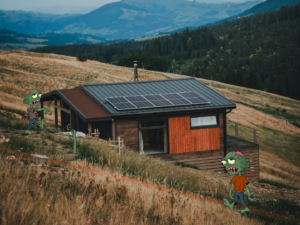Fast fashion is clothing produced rapidly and sold at a very low cost.
These items often follow trend cycles and are marketed to encourage consumers to buy more.
If we’re not up to date with the latest fashion trends, who are we?
It’s a vicious cycle.
STITCHED UP
Before the 1800s, fashion was slow. Materials had to be sourced, prepared and woven.
The creation of the sewing machine during the Industrial Revolution revolutionised clothing production. It became much faster and cheaper.
When trend cycles sped up in the 1990s, the term ‘fast fashion’ was born.
Well-known brands like Forever 21 and Zara were at the forefront of creating what’s described as ‘micro seasons’.
Caption: Well-known giant Zara spearheaded the emergence of fast fashion
Credit: Pratik Prasad (Pexels)
The production of clothing doubled between 2000 and 2015, while the garments’ lifespans shrank by 36%.
Fast-forward to 2025 and online-only brands like Shein and Temu manufacture clothing at an alarming rate.
Social media creates trends faster than we can comprehend. This is ultra-fast fashion.
SEW WHAT?
Fashion is one of the top three industries contributing to pollution, greenhouse gas emissions (GHG) and biodiversity loss, according to the United Nations Environment Programme.
The equivalent of a garbage truck full of textile waste is incinerated or dumped in landfill every second.
This accounts for 2–8% of GHG emissions and 9% of microplastic pollution annually.
Australia is the second-largest consumer of textiles per person in the world after the USA.
Most of these materials will end up in landfill and very slowly decompose.
In landfill, a garment turns into methane and microplastics, polluting the air, soil and ocean for hundreds of years.
Caption: Masses of clothing found in landfills
Credit: Victor Moragriega (Pexels)
THE FUTURE IS CIRCULAR
In the past, clothing was created with intention, valued and made to last.
We can take inspiration from these practices and work together towards a more sustainable future.
Shopping second-hand at op shops or on online platforms like Facebook Marketplace and Depop is a great start. Repairing clothing instead of throwing it away helps too.
Choose natural fabrics like organic cotton, linen and wool over low-quality synthetic materials like polyester and viscose.
In Perth, Good Sammy offers help hosting clothing donation drives. Perth Community Clothing Recycling Wholesaler provides free collection services for textile recycling.
By revisiting slow fashion, we can work towards a circular economy that’s better for our wardrobe, our wallet and our planet.









